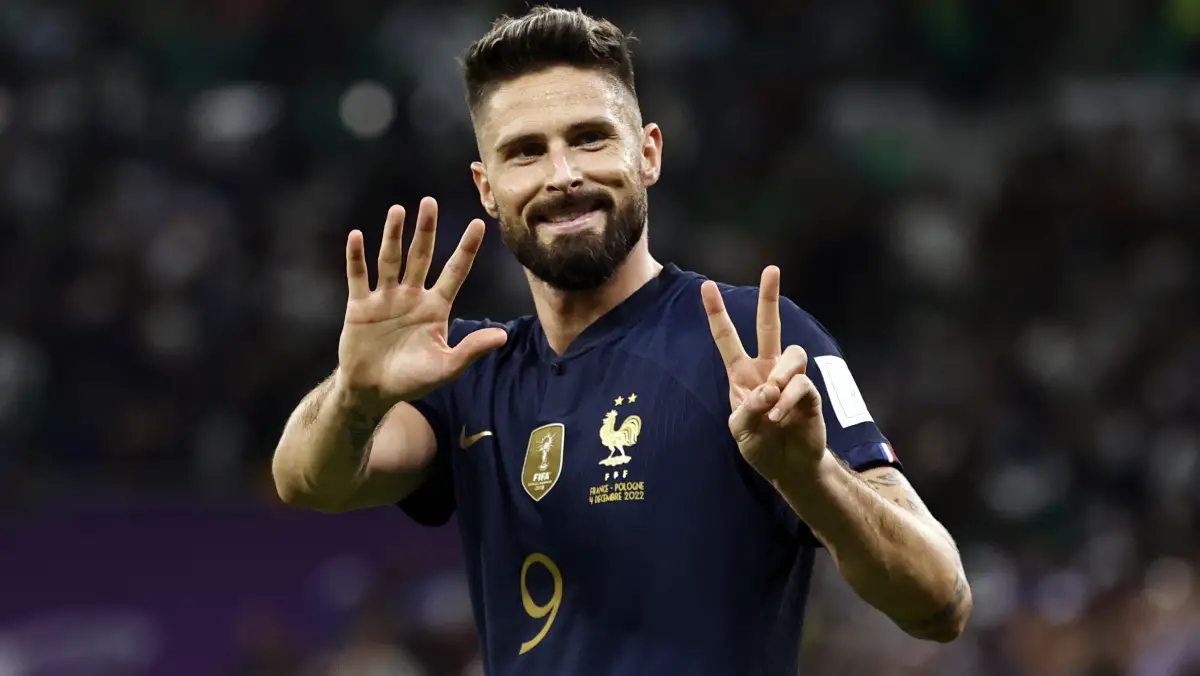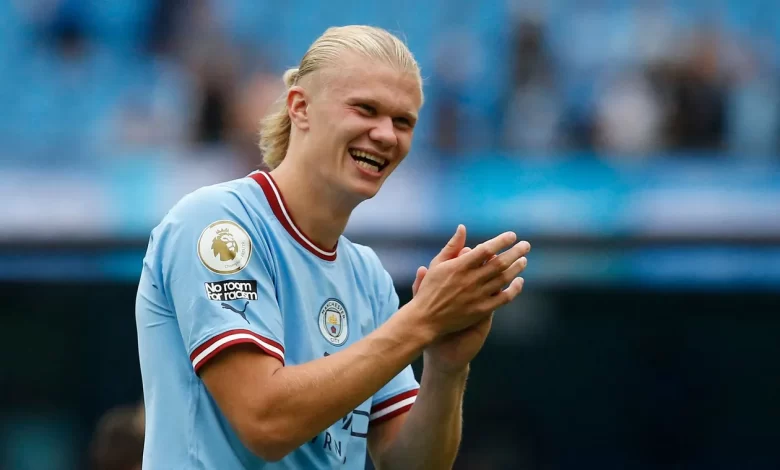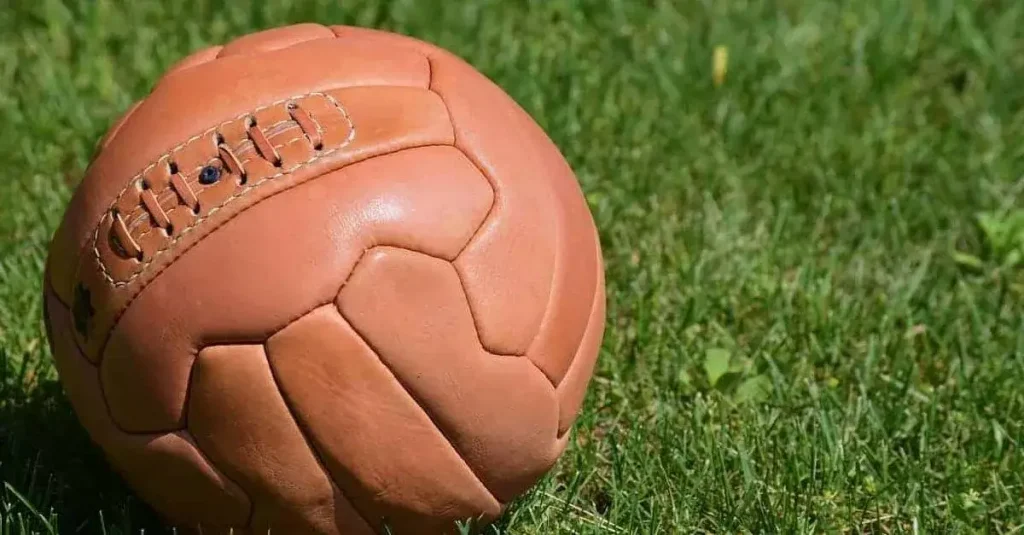Ever found yourself watching ex-footballers talking about strikers, only to hear them referred to as Centre-Forwards? Or furthermore, have found certain strikers are Centre-Forwards, but others aren’t?
Well, there is a reason for that, and the two are not entirely synonymous.
While they do adopt similar roles and share duties, the roles fit different archetypes of players.
Both are focused on goal-scoring, but what exactly sets them apart?
What Is A Striker?

Put simply, the striker is your out-and-out goal scorer. His job is to score.
They will almost always be the furthest forward on a team and will spend much of the game playing on the last man, hoping to spin behind them, or looking for pockets of space in the opposition box when their team is looking to work the ball into the penalty area.
Think of players like Jamie Vardy, Erling Haaland, and even Cristiano Ronaldo. These are players who are usually the ones finishing off attacks.
They are all about scoring, with an element of selfishness even encouraged. A striker should always want to score, and more importantly, back their open ability to put the ball in the net.
They are instinctive players, over-thinking is usually a curse present in those strikers running low on confidence. A good striker knows the right time to shoot, place to aim for and type of shot in a split second without even having to think about it.
That is not to say that there is no tactical nuance, with Haaland for example we see him constantly scanning and looking around him, assessing where defenders are in relation to him.
But when the ball comes to him, and he has a chance to score, that is when instinct takes over.
Their most important attributes are speed and physicality, composure and anticipation and of course, finishing/shooting ability. Any striker who does well in these areas will deliver the goals with the right service.
What Is A Centre-Forward?

The Centre-forward operates slightly deeper than a striker, sitting slightly further back. They operate ahead of a CAM, but not as far forward as a striker.
As such, they are not so reliant on pace and power, as rather than play on the last defender and hope for quick balls in behind, or hang around in the box looking for space to nab a goal.
They aim to get more involved in the play, adding lots of playmaking elements to the role that aren’t so emphasised in strikers.
They are encouraged to be less selfish. Teamwork is vital to the role, as they assume the role of an advanced playmaker. Unlike the CAM, however, they will still be the furthest central player forward, meaning they will typically look to be the focal point of quick passing moves, setting up others just as much as scoring themselves.
That’s not to say they won’t score many goals, but the Centre-Forward is rarely the free-scoring goal machine of the team.
Typically, formations involving Centre-forwards feature very attacking wingers, and an attacking midfielder just behind them to link up with. Arsenal’s 4-2-3-1 set-up utilises Gabriel Jesus as a centre-forward, in which he is often the one to look for a pass and get involved in passing moves.
In fact, this sort of striker has been used in Arsenal’s system for the past decade, even as far back as Robin Van Persie, probably the last to fit the striker mould.
Giroud is an excellent example of a Centre-forward. Always offering an outlet, and usually looking to feed others, his role at Arsenal, Chelsea and for the French national side has been one more akin to a playmaker, despite playing further forward.
Centre-forwards are encouraged to come deeper and help build attackers, epitomising the idea that ‘sometimes you have to go backwards to go forwards”.
While typical midfield playmakers are usually on the smaller side, most modern Centre-Forwards are much taller, physical players.
With this playstyle, height and strength are much more important than pace.
Sides operating with these sorts of forwards aren’t typically aiming to play killer balls through the middle, and instead play slower possession football, or look to play their killer balls to the wingers.
The Key Differences
While speed is much less important, they rely on a much larger toolkit than the classic striker.
The CF needs to be technically proficient, possessing great ball control and passing range. Strength and hold-up play is useful like it is for strikers, but by no means a necessity.
Famously, Lionel Messi enjoyed his most successful season operating in a Centre-Forward role, operating as a False-9 in Guardiola’s Barcelona.
I’m sure I don’t need to explain to you, that Messi wasn’t holding up long balls every game.
A centre-forward spends a lot of the game with their back to goal, and with so much emphasis on link-up play, they can often be seen as doing a poor job by fans due to a lack of goals.
But time and time again, we see managers defend and praise centre-forwards as brilliant despite a paltry goal tally.
Take Roberto Firmino, who in Klopp’s Premier and Champions League-winning Liverpool system was comfortably outscored by both Mane and Salah almost every season the trio played together.
He was the main forward, making at least 34 league appearances from 2016-2021, but only scored more than 12 league goals in a season once during his time at Anfield.
While for a striker his numbers were a little lacking, as a Centre-Forward he had accomplished his job masterfully, enabling Salah and Mane on the wings, as they flourished, Salah scoring upwards of 20 every season.
Unlike in the days of old, where the wingers were there to feed balls into the forward, Firmino was feeding the wingers.
Since Firmino moved to Saudi Arabia, Liverpool has struggled to fill the gap Firmino left, as signs of their post-Firmino struggles were present in their lacklustre 22/23 season where he saw much less playing time.
In short, the key difference is the emphasis on playmaking ability. As they are further forward, and help build attacks already in motion, rather than provide the impetus to an attack like the traditional midfield playmaker, pace is far less important, as is dribbling.
But ball control is crucial. An immaculate first touch is integral to the success of the role in the modern game, especially with the ubiquity of relentless pressing.
They need to be much more analytical than the striker and play in teammates, focussing not just on where defenders are, but how they can help continue an attack.
As such, they have to think multiple steps ahead, needing the vision to see difficult passes and where a teammate is going to be before they’ve started to make a run in behind or to find space.
So, while sometimes used by people synonymously, the two terms are very different roles, and while they may look the same when you observe a team’s formation, the playstyle of the team dictates whether you’ll be seeing a striker or a Center-Forward.
Guardiola’s 4-2-3-1 with Haaland leading the line, sees Erling assume a very different role to the way Guardiola used Messi at Barca, or how both he and Protege Arteta have used Gabriel Jesus.





